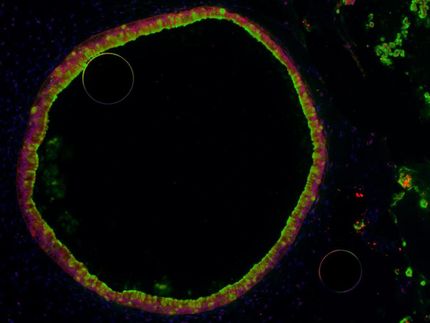VCU EXPERTS IDENTIFY KEY MOLECULAR PLAYERS INVOLVED IN THE PATHOGENESIS OF LYME DISEASE
Virginia Commonwealth University scientists have made a key advance in understanding the proteins and mechanisms involved in the spread of Lyme Disease, a finding that could lead to a vaccine against the tick-borne illness that affects thousands of people each year.
In the December issue of the Journal of Immunology, the researchers characterized the molecular interaction that occurs between an important virulence factor in Lyme disease spirochetes, known as OspE, and a host protein, factor H (fH), which is an important regulator of the immune system. It is the binding of fH by the Lyme disease pathogens that allows the bacteria to avoid being destroyed by the host, according to the article. Defining the nature of the interaction between fH binding proteins and fH may facilitate the development of a new generation of vaccines against the bacteria.
"Understanding the complex interaction between the different residues and structural elements of these key proteins involved in the pathogenesis of Lyme Disease is a significant step forward in our research," said Richard T. Marconi, Ph.D., associate professor of microbiology and immunology at VCU.
Lyme disease spirochetes use fH-binding as a virulence mechanism - an ability that has also been observed in several other dangerous pathogens, including those responsible for HIV; various species of Neisseria, which cause diseases like meningitis and gonorrhea; and some types of parasites.
"In addition, what we have learned in our study of fH binding by the Lyme disease bacteria can be applied to vaccine development for other organisms that bind fH as well," he said.
Leading one of the largest Lyme Disease research efforts in the country, Marconi's lab demonstrated that fH-binding by OspE was dependent on the formation of specific structural elements. Disruption of these structural elements resulted in the loss of the fH-binding capability.
"For example, the use of modified forms of OspE that can not bind fH as a vaccinogen may elicit an immune response that will prevent the pathogen from binding fH and thus the bacteria will no longer be able to persist in an infected individual," he said. "The modification of fH binding proteins may allow for the development of a novel class of proteins that can be used in the development of a Lyme disease vaccine."
Studies are currently under way to determine if these modified proteins will offer improved protection against Lyme Disease.
Lyme disease is extremely difficult to diagnose and no reliable test or vaccine is currently available. It is transmitted by the bite of an infected Ixodes tick. Ticks are able to survive under a variety of conditions as long as adequate moisture is available. In the United States, the peak season for ticks is April to September in the northeast, and from November to April in the west.
Marconi's research is supported by three grants from the National Institutes of Health, totaling about $4 million. He collaborated with John McDowell, Ph.D., a postdoctoral fellow in the VCU's Department of Microbiology and Immunology.
Most read news
Topics
Organizations
Other news from the department science

Get the life science industry in your inbox
By submitting this form you agree that LUMITOS AG will send you the newsletter(s) selected above by email. Your data will not be passed on to third parties. Your data will be stored and processed in accordance with our data protection regulations. LUMITOS may contact you by email for the purpose of advertising or market and opinion surveys. You can revoke your consent at any time without giving reasons to LUMITOS AG, Ernst-Augustin-Str. 2, 12489 Berlin, Germany or by e-mail at revoke@lumitos.com with effect for the future. In addition, each email contains a link to unsubscribe from the corresponding newsletter.
More news from our other portals
Last viewed contents
Fungus against fungus: Fungicide from Penicillium
Sodium MRI gives new insights into detecting osteoarthritis, NYU researchers find























































